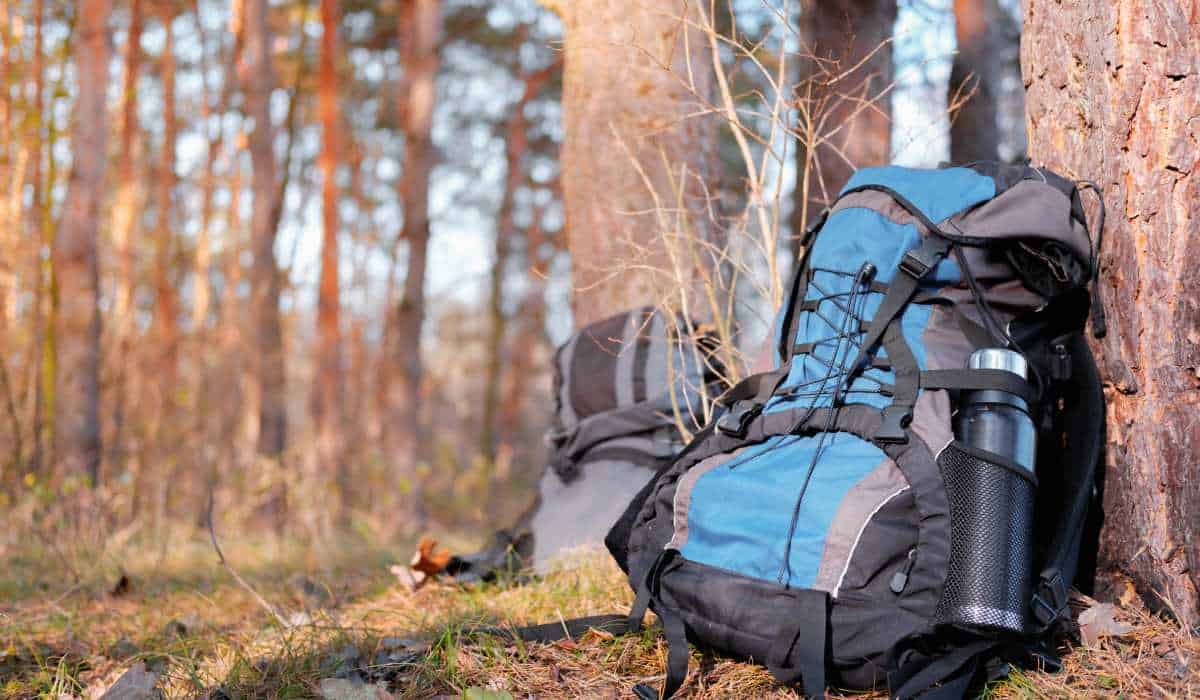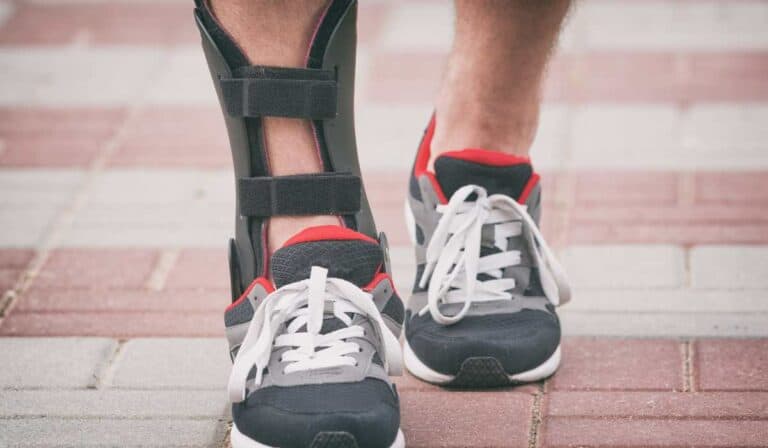Best Hiking Backpacks for Big Guys
Finding the optimal backpacks for bigger folks can be a complex mission, especially when one desires to take pleasure in outdoor adventures without diminishing comfort and robustness. For larger individuals, this blog post will provide guidance on finding the ideal backpack that meets your specific requirements and comfort needs.
We’ll discuss how to choose the right size hiking backpack by considering factors such as torso length and hip belt adjustments. Furthermore, we will explore efficient packing techniques for maximizing space in your main compartment while ensuring easy access to essential items during day hikes or camping trips.
In addition, adjusting your hiking backpack for maximum comfort is crucial; hence, we will delve into shoulder straps and waist strap customization tips. Proper storage and regular maintenance are also vital aspects of prolonging the lifespan of your investment – something we will cover in detail later on.
Last but not least, selecting suitable accessories like rain covers or sleeping pad attachments can enhance your overall experience with some of these top-rated hiking backpacks designed specifically for bigger guys.
Table of Contents
1. Identifying the Best Hiking Backpacks for Big Guys

For the big and tall, selecting a hiking backpack that provides comfort and optimal fit can be difficult; however, there is no need to despair. We have compiled some tips on how to identify the best hiking backpacks specifically designed for larger individuals.
A. Look for an Adjustable Torso Length
An adjustable torso length is crucial when choosing a hiking backpack for big guys because it allows you to customize the fit according to your body’s dimensions. This feature ensures that your pack sits comfortably on your back without causing any strain or discomfort during long hikes. Some popular brands offering adjustable torso lengths include Osprey, Gregory, and Deuter.
B. Opt for Wide Shoulder Straps and Hip Belts
Wide shoulder straps distribute weight evenly across your shoulders, reducing pressure points that can cause pain during extended hikes. Similarly, wide hip belts provide better support by transferring most of the load from your shoulders down to your hips – which are more capable of carrying heavier loads than just relying on upper body strength alone.
C. Check Load Capacity and Volume
- Load capacity: Make sure that the backpack has a sufficient load capacity (usually measured in pounds) suitable for carrying all of your gear while maintaining comfort throughout long treks.
- Volume: The volume of a backpack (measured in liters) determines how much gear it can hold. For multi-day hikes, big guys should look for packs with at least 60-80 liters capacity to accommodate all necessary items such as clothing, food, and camping equipment.
D. Consider Ventilation Features
A well-ventilated hiking backpack is essential for keeping you cool and comfortable during your outdoor adventures. Look for features like mesh back panels or suspended mesh frames that allow air to circulate between the pack and your body, preventing excessive sweating and discomfort on hot days.
E. Read Reviews from Other Big Guys
Finally, don’t forget to read reviews from other hikers who share similar body types as yourself. This will give you valuable insights into which brands and models have worked best for them – making it easier for you to find the perfect hiking backpack tailored specifically towards big guys.
Incorporating these tips while searching for your ideal hiking backpack will help ensure that you’re well-equipped with a comfortable and supportive pack designed just right for larger individuals.
Key Points To Remember:
Big guys can find it challenging to select a comfortable and well-fitting hiking backpack, but adjustable torso length, wide shoulder straps and hip belts, sufficient load capacity and volume, ventilation features, and reading reviews from other big hikers are key factors to consider. Following these tips when searching for the perfect backpack tailored specifically towards larger individuals will ensure that you’re equipped with a supportive pack designed just right for your body type.
Click to read about Best Way to Carry Water While Hiking
2. Choosing the Right Size Hiking Backpack
Finding the ideal hiking pack for larger individuals can be a tricky business, but getting the correct size is essential to guarantee comfort and ease on your outside journeys. To ensure a comfortable and convenient outdoor experience, determining the correct backpack size based on your body type and needs is essential.
Torso Length Measurement
Your torso length is crucial in selecting a well-fitting hiking backpack. To measure your torso length, ask someone to help you locate two points: The C7 vertebra at the base of your neck (the most prominent bump when you tilt your head forward) and the iliac crest (where you feel bones protruding slightly on either side of your hips). Measure between these two points using a flexible tape measure while keeping it straight along with your spine. Most large-sized hiking backpacks cater to torso lengths ranging from 18 inches or more.
Hip Belt Size
A comfortable hip belt is vital for distributing weight evenly across your hips rather than putting pressure on your shoulders alone. Make sure that there is enough padding and adjustability in hip belts designed specifically for larger individuals. You may also consider purchasing additional padded hip belts if needed.
Different Types of Backpack Capacities:
- Daypacks (15 – 30 liters): Ideal for short hikes or day trips where only essentials like snacks, water bottles, rain gear, etc., are required.
- Multiday Packs (30 – 50 liters): Suitable for weekend trips or multi-day hikes carrying extra clothing layers, food supplies, cooking gear, and a sleeping bag.
- Extended Trip Packs (50+ liters): Perfect for long trips or expeditions where you need to carry more gear, clothing, food supplies, and even camping equipment like tents.
It’s essential to strike the right balance between capacity and comfort. A backpack that is too small may not accommodate all your gear while an oversized one can lead to overpacking and unnecessary strain on your back. Make sure you consider factors such as trip duration, weather conditions, and personal preferences in packing style when selecting the appropriate size of hiking backpacks for big guys.
Fitting Your Backpack Properly
A well-fitted hiking backpack should sit comfortably on your hips with minimal pressure on your shoulders. When trying out different packs at stores or online retailers like REI, make sure to adjust straps accordingly so that they are snug but not too tight around the waistline or chest area. It’s also crucial that shoulder straps have ample padding without digging into the skin during prolonged hikes.
In summary, to choose the right size hiking backpack for big guys, measure torso length accurately; ensure proper hip belt sizing; select suitable pack capacity based on trip requirements; try various packs until finding one that fits comfortably without causing discomfort during extended use.
Choosing the right size hiking backpack is essential to ensure a comfortable and safe journey. Optimizing the contents of your hiking rucksack is essential to guarantee you have all that you need for your excursion.
Key Points To Remember:
To find the best hiking backpack for big guys, it’s important to choose the right size based on torso length and hip belt sizing. Consider different pack capacities depending on trip requirements and ensure a comfortable fit by trying out various packs until finding one that sits comfortably on your hips without causing discomfort during prolonged use.
3. Packing Your Hiking Backpack Efficiently

Packing your hiking backpack efficiently is essential for a comfortable and enjoyable outdoor adventure. The proper organization not only helps you find items quickly but also ensures that the weight is evenly distributed, reducing strain on your back and shoulders. In this section, we’ll discuss some tips and tricks to pack your hiking backpack like a pro.
A. Organize Items by Priority
When packing your backpack, it’s crucial to organize items based on their priority of use during the hike. For instance:
- Bottom Layer: Place bulky or heavy items that you won’t need until setting up camp at the bottom of the bag, such as sleeping bags and tents.
- Middle Layer: Store frequently used items in the middle layer for easy access throughout the day – think extra layers of clothing, cooking equipment, or food supplies.
- Top Layer: Reserve space at the top for essentials like first aid kits, rain gear, maps/navigation tools – anything you may need in an emergency or sudden change in weather conditions.
B. Use Compression Sacks and Packing Cubes
To save space inside your hiking backpack while keeping everything organized, compression sacks and packing cubes are lifesavers. They help compress bulky clothes or sleeping bags into smaller packages while separating different categories of belongings (e.g., toiletries from electronics).
C. Distribute Weight Evenly
An uneven load can lead to discomfort during long hikes; hence it’s vital to distribute weight properly within your bag:
- Place heavier items close to your back and centered between your shoulder blades.
- Keep lighter items towards the top and outer sides of the backpack.
D. Utilize External Attachment Points
Many hiking backpacks come with external attachment points, such as loops or straps, designed for securing additional gear like trekking poles or a sleeping pad. Make use of these features to free up space inside your bag while ensuring that everything is securely fastened during your hike.
E. Pack Snacks in Accessible Pockets
Last but not least, don’t forget about snacks. Keep energy bars, trail mix, or other quick bites within easy reach by storing them in side pockets or hip belt compartments – this way you can refuel without having to stop and rummage through your entire pack.
By following these pointers, you’ll be well-prepared for your hiking trips and able to maximize the enjoyment of each one.
For optimal convenience and security, ensure that your hiking backpack is properly packed. Now let’s look at how to adjust the pack for maximum comfort while on the trail.
Key Points To Remember:
Learn how to pack your hiking backpack like a pro with these tips and tricks. Organize items by priority, use compression sacks and packing cubes, distribute weight evenly, utilize external attachment points, and pack snacks inaccessible pockets for an enjoyable outdoor adventure.
Click to read about Best Sunset Hikes in Oahu for Breathtaking Views
4. Adjusting Your Hiking Backpack for Comfort
Carrying a hiking backpack on long hikes can be challenging, especially for bigger guys. But fear not. With the right adjustments, you can ensure maximum comfort while exploring the great outdoors. In this section, we’ll discuss how to adjust your hiking backpack so that it fits snugly and comfortably on your body.
A. Shoulder Straps
Your shoulder straps are crucial in distributing weight evenly across your upper body. To properly adjust them:
- Loosen all straps before putting on the backpack.
- Put the pack on and secure the belt at your hipbone’s peak.
- Tighten the shoulder straps until they fit snugly against your shoulders without causing discomfort or restricting movement.
- The load lifters (smaller straps connecting from the shoulder strap to the top of the pack) should be adjusted at a 45-degree angle towards the back panel – this helps transfer some weight off shoulders onto hips.
B. Hip Belt
The hip belt is responsible for carrying most of a hiking backpack’s weight; therefore, proper adjustment is essential:
- Ensure that it sits directly over the iliac crest with padding wrapping around the hips comfortably but securely.
C. Sternum Strap
This strap connects two shoulder pads together across the chest area, providing additional stability support when walking:
- Fasten the sternum strap so it sits comfortably across the chest without constricting breathing or causing discomfort.
- If needed, adjust the height up or down to find the most comfortable position that still provides stability.
D. Load Distribution
Last but not least, proper load distribution is key for a comfortable hike. Here are some tips:
- Pack heavier items close to your back and centered vertically in the pack – this helps maintain balance while hiking.
- Keep lighter items towards the top and outer parts of the pack, as well as in external pockets for easy access during breaks.
By taking the time to make these adjustments before hitting the trail, you’ll ensure more enjoyable outdoor activities with less strain on your body.
Making sure your hiking backpack fits comfortably is essential for an enjoyable outdoor adventure. By storing it properly, you can extend the life of your pack and ensure that it remains in top condition.
Key Points To Remember:
Big guys can adjust their hiking backpacks for maximum comfort by loosening all straps before putting on the backpack, tightening shoulder straps until they fit snugly against shoulders without causing discomfort or restricting movement, ensuring that the hip belt sits directly over the iliac crest with padding wrapping around hips comfortably but securely and packing heavier items close to your back and centered vertically in the pack. By following these tips, big guys can enjoy more comfortable hikes with less strain on their bodies.
5. Storing Your Hiking Backpack Properly

Proper storage of your hiking backpack is essential for ensuring its longevity and maintaining its good condition. By following a few simple guidelines, you can keep your backpack ready for many more outdoor adventures to come. In this section, we’ll discuss some key tips on how to store your hiking backpack properly.
A. Clean Your Backpack Before Storage
Before storing your hiking backpack, it’s important to give it a thorough cleaning. Remove any dirt or debris from the exterior using a soft brush or cloth and mild soap mixed with water. For stubborn stains, consider using specialized backpack cleaning products. Don’t forget to empty all pockets and compartments as well.
B. Dry Your Backpack Completely
To prevent mold and mildew growth, make sure that your hiking backpack is completely dry before storing it away. Hang it in a well-ventilated area out of direct sunlight until fully dry – this may take several hours or even days depending on the material.
C. Store It in A Cool, Dry Place Away From Direct Sunlight
- Avoid storing your hiking backpack in damp areas such as basements or garages where moisture can accumulate.
- Keep the bag away from direct sunlight which can cause fading and weaken materials over time.
- If possible, store the bag off the ground (e.g., hanging it up) to reduce exposure to dust and pests.
D. Loosen Straps And Compression Systems When Not In Use
Tightening straps while storing your backpack can cause unnecessary stress on the materials and may lead to premature wear. Loosen all straps, buckles, and compression systems before storing your bag.
E. Use A Storage Bag or Cover
Consider using a storage bag or cover specifically designed for hiking backpacks to protect them from dust, dirt, and pests while in storage. Safeguarding your pack from dust, grime, and critters when not in use is essential for keeping it clean and ready to tackle the next excursion.
By following these simple tips on proper storage techniques for your hiking backpack, you’ll ensure that it stays in great condition for many more adventures exploring planet Earth.
Properly storing your hiking backpack can help extend its life and keep it in good condition. Regular maintenance of your pack is essential to ensure that you are always prepared for any outdoor adventure.
Key Points To Remember:
For your backpack to remain in good condition, it is essential to store it properly. Before stowing your backpack, clean and dry it thoroughly, then place it in a cool spot not exposed to direct sunlight. Loosen all straps and compression systems and consider using a storage bag or cover to protect it from dust, dirt, and pests while in storage.
Click to read about Best Shoes for Hiking Sand Dunes
6. Maintaining Your Hiking Backpack Regularly
Maintaining your hiking backpack is essential to ensure its longevity and functionality on all your outdoor adventures. To maintain the optimal condition of your backpack, a few easy steps should be taken regularly.
Cleaning Your Hiking Backpack
Regular cleaning of your hiking backpack will help prevent dirt buildup, mold growth, and unpleasant odors. Follow these easy steps:
- Empty the backpack: Remove all items from the compartments and pockets before starting the cleaning process.
- Brush off loose dirt: Use a soft brush or cloth to remove any loose dirt or debris from both the inside and outside of the bag.
- Sponge clean with mild soap: Mix a small amount of mild detergent with warm water, then use a sponge to gently clean the entire surface area of the bag. Avoid using harsh chemicals that could damage fabric materials. REI provides an excellent guide on how to care for different types of fabrics used in hiking bags.
- Rinse thoroughly: Rinse off any remaining soap residue with cold water until it runs clear.
- Air dry completely: Hang up your bag in a well-ventilated area away from direct sunlight so it dries completely before storing it away or using it again.
Inspecting Your Hiking Backpack Before Each Use
Prioritizing safety while enjoying outdoor activities means inspecting equipment regularly – this includes checking over every aspect of your hiking backpack before each use. Be sure to:
- Inspect all zippers, buckles, and straps for any signs of wear or damage.
- Check the seams and stitching on both the exterior and interior of the bag for fraying or loose threads.
- Examine the fabric material for tears, holes, or abrasions that could compromise its durability during hikes.
If you notice any issues with your hiking backpack during these inspections, it’s essential to address them promptly – either by repairing them yourself if possible or taking it to a professional repair service. Regular maintenance will ensure that your backpack remains reliable throughout many outdoor adventures.
By regularly maintaining your hiking backpack, you can ensure that it will last for many years of outdoor adventures. Opting for suitable add-ons to accompany your knapsack is a crucial part of guaranteeing an enjoyable excursion.
Key Points To Remember:
To ensure the longevity and functionality of your hiking backpack, it’s important to maintain it regularly. This includes cleaning it with mild soap and inspecting all zippers, buckles, straps, seams, stitching and fabric material before each use. Promptly addressing any issues that arise will help keep your backpack reliable for many outdoor adventures to come.
7. Selecting Accessories For Your Hiking Backpack

Now that you have chosen the perfect hiking backpack for your big frame, it’s time to accessorize. There are several essential accessories that can make your hiking experience more enjoyable and efficient. In this section, we will explore some must-have items for a successful hike.
A. Water Bottles or Hydration Systems
To ensure you remain adequately hydrated during a strenuous hike, consider bringing along water bottles or a CamelBak-style hydration system. Make sure to pack enough water in either reusable water bottles or opt for a hydration system like CamelBak. A hydration system allows you to drink water without having to stop and remove your backpack – an excellent feature for those who want convenience while on the trail.
B. Trekking Poles
Trekking poles provide extra stability and support during hikes by reducing strain on joints and muscles. They are particularly helpful when navigating uneven terrain or carrying heavy loads in your backpack. Check out this guide from Outside Online for assistance in selecting trekking poles that are suited to your requirements.
C. Rain Covers & Waterproof Liners
- Rain covers: These protect your hiking backpack from getting soaked during unexpected rain showers, keeping its contents dry as well as maintaining its overall durability over time.
- For additional protection, waterproof liners can be placed inside the main compartment of your backpack to keep items dry. Some hikers prefer this method as it allows for better organization and separation of wet and dry items.
Both rains covers and waterproof liners can be purchased at outdoor gear stores or online retailers like REI.
D. First Aid Kit & Emergency Supplies
It’s essential to carry a well-stocked first aid kit on any hike, no matter the distance or difficulty level. Be prepared for unexpected injuries by packing essentials such as bandages, antiseptic wipes, pain relievers, and any personal medications you may need.
In addition to a first aid kit, consider including emergency supplies in your hiking backpack like a whistle, multi-tool or knife, fire starter (matches/lighter), headlamp with extra batteries, space blanket (for warmth), compass or GPS device (Garmin is a popular brand) and some form of communication device if possible.
E. Snacks & Food Items
Fueling up during hikes is crucial for maintaining energy levels throughout the day. Pack lightweight snacks that are high in calories but don’t take up much space in your bag – think trail mix, granola bars, dried fruit/nuts/seeds/chocolate, jerky/meat sticks/cheese bites, peanut butter packets/bagels/crackers/tortillas, electrolyte tablets/powdered drink mixes/gel shots, etc.
Key Points To Remember:
When selecting accessories for your hiking backpack, consider items such as water bottles or hydration systems, trekking poles for extra support and stability, rain covers or waterproof liners to protect your belongings from unexpected showers, a well-stocked first aid kit with emergency supplies like a whistle and compass or GPS device. Lastly, pack lightweight snacks high in calories to maintain energy levels throughout the day.
Click to read about Best Hot Weather Hiking Skirts
FAQs About Best Hiking Backpacks for Big Guys
Which Osprey backpack is best for big guys?
The Osprey Atmos AG 65 is an excellent choice for big guys, as it offers a large size option with adjustable torso length and a hip belt. Its AntiGravity suspension system provides comfort and support while evenly distributing weight across the body.
How heavy is too heavy for a hiking backpack?
A hiking backpack should not exceed 20% of your body weight to ensure comfort and prevent injury. For example, if you weigh 200 pounds, your loaded pack should be no more than 40 pounds. It’s essential to balance carrying necessary gear with maintaining a manageable load.
How many pounds can a hiking backpack hold?
Hiking backpacks vary in capacity but typically hold between 30 and 70 liters (1,800 – 4,300 cubic inches) of gear. This translates to approximately 15 – 50 pounds depending on the specific model and materials used in construction. Always check the manufacturer’s recommendations before overloading your pack.
What size backpack is best for an all-day hike?
A daypack, ranging from about 20 to 35 liters (1,200 – 2,100 cubic inches), would be suitable for an all-day hike. This allows enough space for essentials like water bottles or hydration systems, snacks or lunch items, sunscreen, insect repellent, rain jackets, and other personal items without being overly bulky or heavy.
Conclusion
Choosing the best hiking backpack for big guys is crucial to ensure a comfortable and enjoyable outdoor experience. It’s important to consider factors such as size, packing efficiency, comfort, storage, maintenance and accessories when selecting a backpack. By following these guidelines, you can find the perfect fit for your needs.
In conclusion, investing in one of the best hiking backpacks for big guys will make all the difference on your next adventure. With proper sizing and efficient packing techniques along with regular maintenance and accessorizing, you’ll be able to enjoy your hikes without any discomfort or inconvenience.
For the most reliable hiking gear, visit SunWaterDirt.com to ensure a successful journey!







